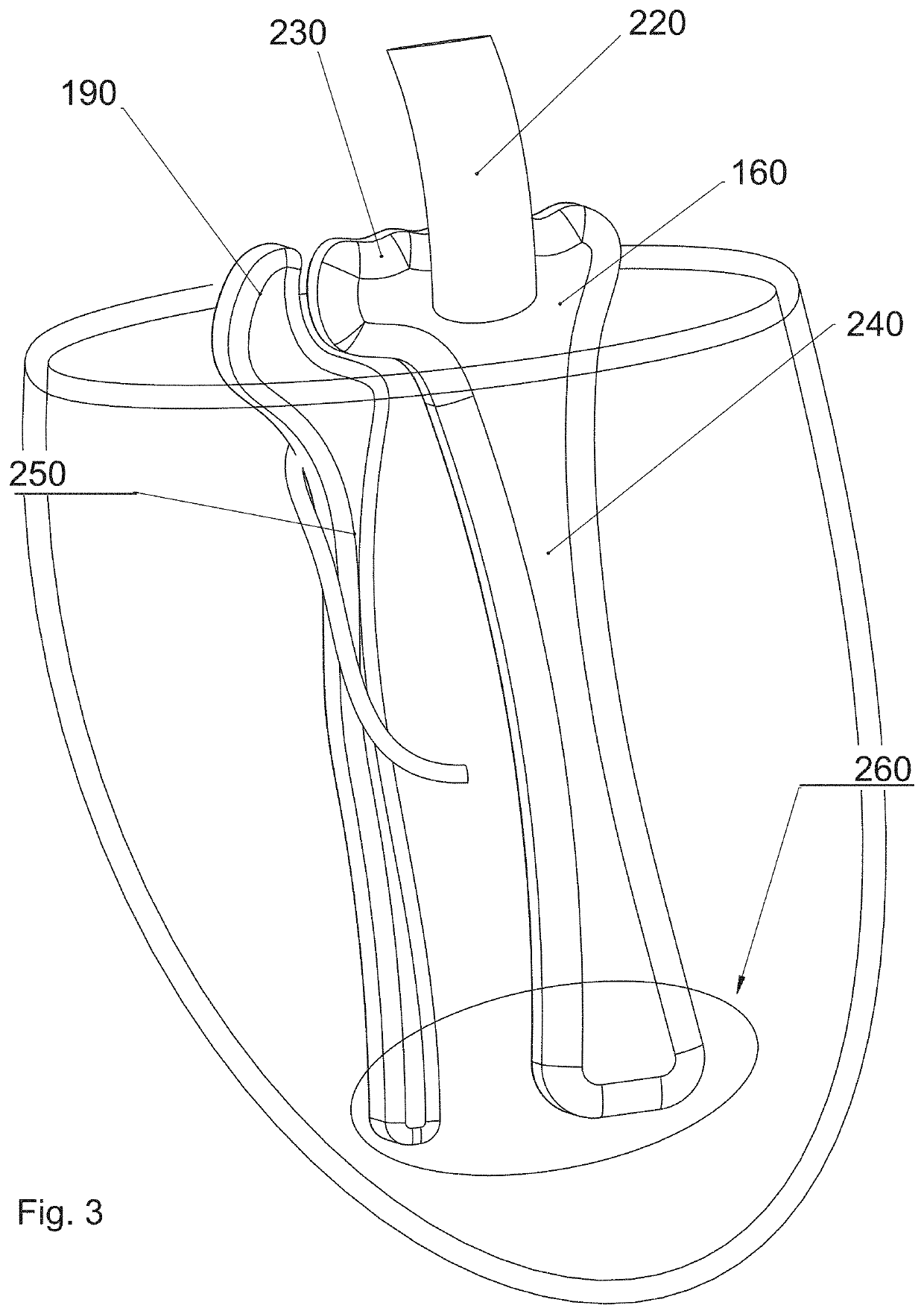Knit Prosthetic Liner Textile With Differentiated Knit Fabric Exterior Incorporating Low Extensibility Strips
a technology of knit fabric and prosthetics, applied in the field of liners, can solve the problems of delay between the time of residual limb movement, amputees will find it difficult to flex the knee, and high construction cost, and achieve the effect of preventing “pistoning” and lowering longitudinal stretch
- Summary
- Abstract
- Description
- Claims
- Application Information
AI Technical Summary
Benefits of technology
Problems solved by technology
Method used
Image
Examples
Embodiment Construction
[0048]The following description is of the best mode presently contemplated for carrying out the invention. This description is not to be taken in a limiting sense, but is made merely for the purpose of describing one or more preferred embodiments of the invention. The scope of the invention should be determined with reference to the claims.
[0049]The present invention relates to a liner 100 for use with prosthetic devices. As shown in FIG. 1, the liner 100 for use with a prosthetic assembly comprises a plurality of types of stitching. The liner 100 comprises a distal region 50, proximal region 60, and an optional intermediate region 70. In one embodiment, the distal region 50 that comprises the distal end 80 of the liner is constructed with a reduced vertical stretch when compared to the upper region 60 of the liner. Preferably, the distal region 80 has a vertical stretch of 0-30% and a horizontal stretch of 10-200% as compared to the proximal region 60, which preferably has a vertic...
PUM
 Login to View More
Login to View More Abstract
Description
Claims
Application Information
 Login to View More
Login to View More - R&D
- Intellectual Property
- Life Sciences
- Materials
- Tech Scout
- Unparalleled Data Quality
- Higher Quality Content
- 60% Fewer Hallucinations
Browse by: Latest US Patents, China's latest patents, Technical Efficacy Thesaurus, Application Domain, Technology Topic, Popular Technical Reports.
© 2025 PatSnap. All rights reserved.Legal|Privacy policy|Modern Slavery Act Transparency Statement|Sitemap|About US| Contact US: help@patsnap.com



